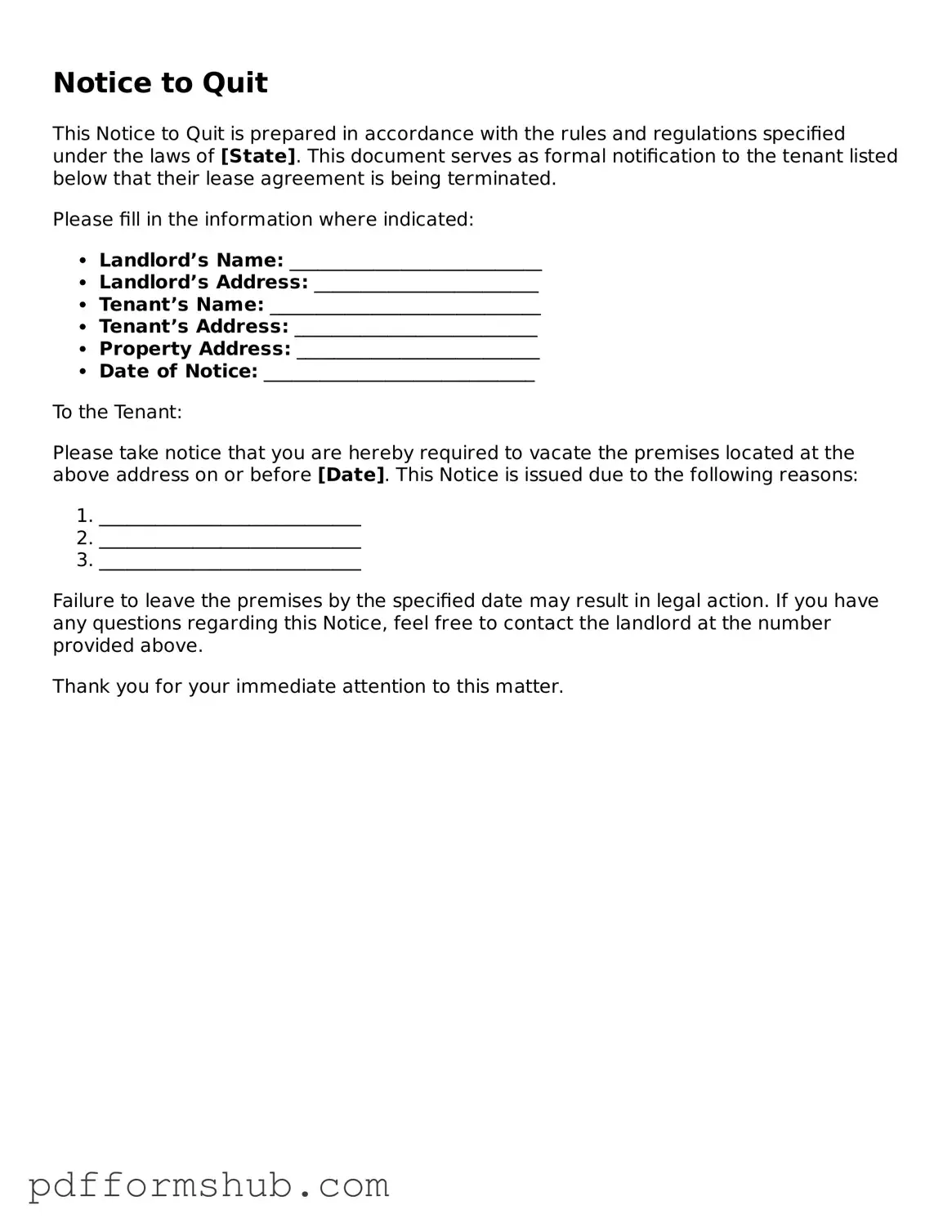Valid Notice to Quit Form
The Notice to Quit form is a legal document that a landlord uses to inform a tenant of the intention to terminate their tenancy. This form outlines the reasons for eviction and provides a timeframe for the tenant to vacate the property. Understanding this form is crucial for both landlords and tenants, as it sets the stage for the eviction process.
Ready to take the next step? Fill out the Notice to Quit form by clicking the button below.
Customize Form
